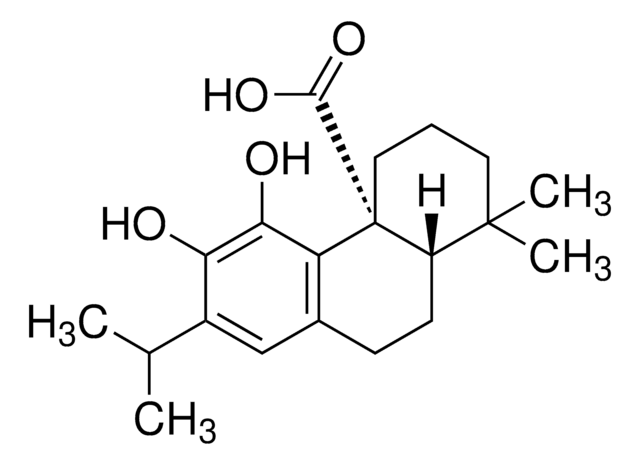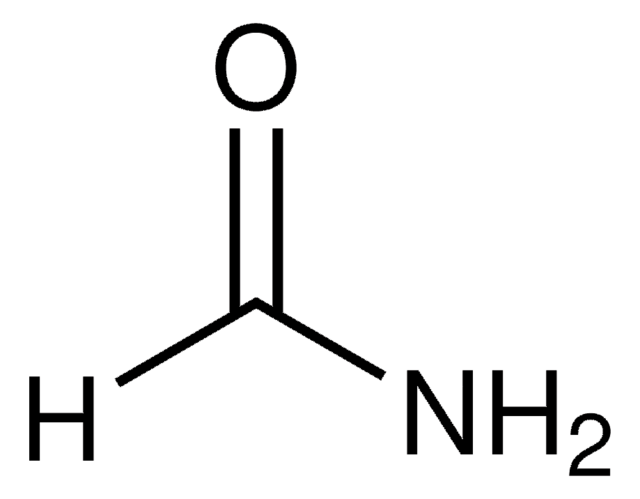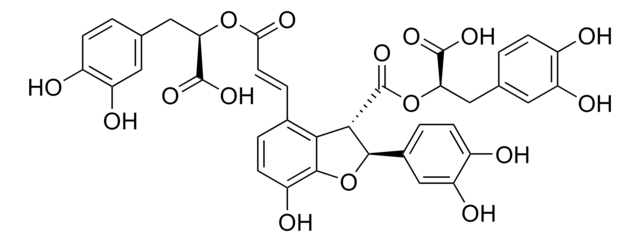R4033
Rosmarinic acid
≥98% (HPLC), from Rosemarinus officinalis L.
Synonym(s):
(R)-O-(3,4-Dihydroxycinnamoyl)-3-(3,4- dihydroxyphenyl)lactic acid, 3,4-Dihydroxycinnamic acid (R)-1-carboxy-2-(3,4-dihydroxyphenyl)ethyl ester
About This Item
Recommended Products
biological source
Rosemarinus officinalis L.
Quality Level
Assay
≥98% (HPLC)
form
powder
storage condition
protect from light
color
white to faint beige
mp
171-175 °C (lit.)
solubility
H2O: 1 mg/mL, clear, colorless
application(s)
metabolomics
vitamins, nutraceuticals, and natural products
storage temp.
2-8°C
SMILES string
OC(=O)[C@@H](Cc1ccc(O)c(O)c1)OC(=O)\C=C\c2ccc(O)c(O)c2
InChI
1S/C18H16O8/c19-12-4-1-10(7-14(12)21)3-6-17(23)26-16(18(24)25)9-11-2-5-13(20)15(22)8-11/h1-8,16,19-22H,9H2,(H,24,25)/b6-3+/t16-/m1/s1
InChI key
DOUMFZQKYFQNTF-WUTVXBCWSA-N
Looking for similar products? Visit Product Comparison Guide
General description
Application
- to see its protective effects on the human endothelial cell line (EA.hy926) to treat diabetic atherosclerosis
- to test its effect in 1-Methyl-4-phenyl-1, 2, 3, 6-tetrahydropyridine (MPTP) induced Parkinson′s disease (PD) models on attenuating inflammatory responses and microglia activation
- to test its neuroprotective effects on dopaminergic neurons
- to test its effects on sperm motility, viability and on intracellular calcium ion concentration
- as a reference standard in capillary zone electrophoresis (CZE) method
Biochem/physiol Actions
Storage Class Code
11 - Combustible Solids
WGK
WGK 3
Flash Point(F)
Not applicable
Flash Point(C)
Not applicable
Certificates of Analysis (COA)
Search for Certificates of Analysis (COA) by entering the products Lot/Batch Number. Lot and Batch Numbers can be found on a product’s label following the words ‘Lot’ or ‘Batch’.
Already Own This Product?
Find documentation for the products that you have recently purchased in the Document Library.
Customers Also Viewed
Our team of scientists has experience in all areas of research including Life Science, Material Science, Chemical Synthesis, Chromatography, Analytical and many others.
Contact Technical Service





